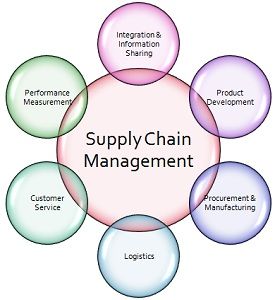Another
year
Gartner has announced
the list with the top 25 supply chain companies.
If
you have been following this blog, you already know that this is a
recurrent topic every year for us. We
already touched base on the criteria,
you can find out more here,
but
in this post we will deep dive even more.
In
2018
Unilever came out on top for the third year in a row.
Once
more Apple,
Procter & Gamble, Amazon and now joining them McDonald’s were
left off the formal top 25, as those four companies have been placed
in a separate relatively new category called "supply chain
masters," a sort of supply chain hall of fame. To get there,
Gartner says a company needs to have attained top-five composite
scores for at least seven out of the last 10 years.
Just
three new companies made the Supply Chain Top 25 this year versus
2017, that being Novo Nordisk, Adidas and Home Depot.
Below
is a chart of this year's Top 25, also with where each company placed
in the last three years (NA means not in the top 25 that year).

So,
you ask, how is the top 25 determined?
Gartner starts with
the Fortune 500 list of top US companies by revenue and the Forbes
global 2000 list that basically does the same thing on a worldwide
basis. It then eliminates a lot of those companies because they do
not much operate what most of us would think of as a real physical
supply chain; companies in banking, insurance, software, and many
more.
What's more, the minimum revenue to be included in
the final evaluation list was again an amazing $12 billion.
From
list, Gartner analyzes publicly available financial data, looking at
three metrics:
Return
on assets (ROA):
Net income / total assets
Inventory
turns: Cost
of goods sold / inventory levels
Revenue
growth: Change
in revenue from prior year
ROA
and revenue growth use a three-year weighted average, meaning the
most recent year gets the most weight and the two prior years
somewhat less. Inventory turns, smartly, uses the prior year's
quarterly average (reducing impact of end of year games). These three
metrics together are given a full 40% of the total score weight (20%
to ROA, 10% to turns, and 10% to revenue growth).
Now keep
in mind that this formula gives a tremendous advantage to some
companies, such as Amazon given its huge revenue growth or McDonald's
and its 175 or so inventory turns per year. It also penalizes
companies like a Home Depot or a Lowes, for example, which are only
going to have turns in the mid-single digits at best.
In
general, this approach penalizes a company within a given sector that
strategically decides on a higher service. It also gives an advantage
to companies that are aggressive acquirers in terms of the revenue
growth factor.
Companies that have heavily outsourced
production and distribution also have an inherent advantage because
they have chosen to shed assets, and that often drives their ROA
metric higher. While outsourcing can be a very smart thing for many
reasons, it does not inherently improve a supply chain.
For
the third year in a row, a new corporate social responsibility factor
was added, which now represents 10% of the total composite score.
This factor, entered in the end as a number between 1 and 10, comes
from a combination of publicly available 3rd party scores on this
criteria.
Another 25% of the final rankings come from
so-called "peer opinion." For 2017, this consisted of about
184 apparently very influential respondents who first select a group
of 25 companies from the master list of about 300 that they believe
are doing the best job
The final 25% of the composite
score came from votes from 42 of Gartner's own supply chain analysts.
Is the process perfect? Certainly not. The unstated
assumption is, for example, that stellar financial results equals
supply chain excellence. Only very, very large companies are
considered. Who really knows how good most other company supply
chains are? And it seems clear to me that working with Gartner and
even better speaking at the Executive Conference always has a
beneficial effect on a company's placement.
The
Gartner top 25 supply chains - it has many faults, but it is the best
we've got!




